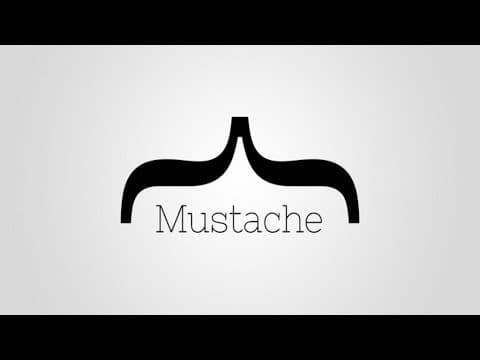What is Mustache JS?
April 3, 2023 • 3 min read
If you're a developer looking for a simple and efficient way to manage templates in your JavaScript application, then Mustache JS might be the right tool for you. Mustache JS is a popular templating engine that allows you to render HTML templates using JSON data. In this blog post, we'll take a closer look at Mustache JS and see how it can simplify your front-end development.
What is Mustache JS?
Mustache JS is a logic-less templating engine that can be used with various programming languages, including JavaScript. It is designed to separate the logic of an application from the presentation layer. With Mustache JS, you define a template that contains placeholders for dynamic data, which are then populated with values at runtime.
Mustache JS is based on the Mustache template language, which was created by Chris Wanstrath in 2009. The idea behind Mustache was to create a simple and flexible templating language that could be used with any programming language. The name "Mustache" is a reference to the curly braces ({}) used in the language, which resemble a mustache.
Why use Mustache JS?
There are several benefits to using Mustache JS in your JavaScript application. Here are a few reasons why you might want to consider using it:
Separation of concerns: Mustache JS helps you separate the presentation layer from the logic of your application. This can make your code more modular and easier to maintain.
Reusability: Mustache JS templates can be reused throughout your application. This can save you time and reduce the amount of code you need to write.
Performance: Mustache JS is lightweight and fast, making it an ideal choice for rendering dynamic content on the client-side.
Flexibility: Mustache JS can be used with any JavaScript framework or library, making it a versatile tool that can be used in a variety of projects.
How to use Mustache JS
Using Mustache JS is simple. First, you'll need to include the Mustache JS library in your project. You can do this by downloading the library and including it in your HTML file, or by using a package manager like npm.
Once you've included the library, you can start creating Mustache JS templates. Here's an example of a simple template that displays the name and age of a person:
<div>
<p>Name: {{name}}</p>
<p>Age: {{age}}</p>
</div>
In this example, the placeholders {{name}} and {{age}} will be replaced with the corresponding values at runtime.
To render this template using Mustache JS, you'll need to provide it with some data. Here's an example of how you could do that:
const data = {
name: "John",
age: 30
};
const template = document.getElementById("template").innerHTML;
const rendered = Mustache.render(template, data);
document.getElementById("output").innerHTML = rendered;
In this example, we first define an object called data that contains the name and age of a person. We then retrieve the template from the HTML file and use the Mustache.render function to render the template with the provided data. Finally, we insert the rendered HTML into the output element.
Conclusion
Mustache JS is a simple and powerful tool for managing templates in your JavaScript application. It can help you separate the presentation layer from the logic of your application, making your code more modular and easier to maintain. With its lightweight and fast performance, Mustache JS is an ideal choice for rendering dynamic content on the client-side. Whether you're working with React, Angular, or any other JavaScript framework or library, Mustache JS is a versatile
